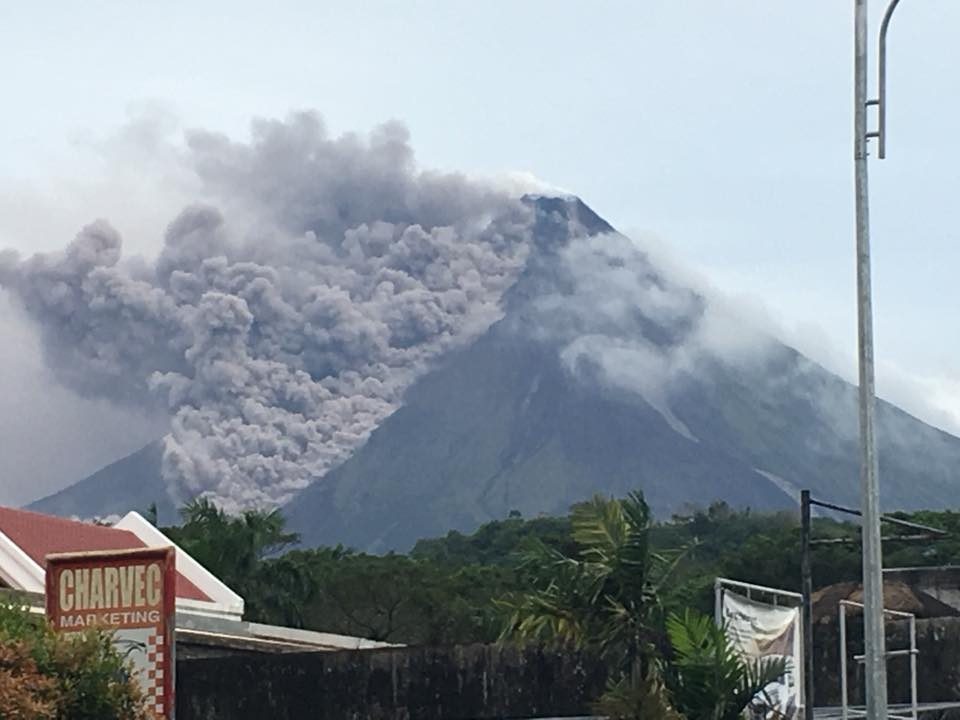SUMMARY
This is AI generated summarization, which may have errors. For context, always refer to the full article.

MANILA, Philippines (UPDATED) – The province of Albay was placed under a state of calamity on Tuesday, January 16, amid the threat of a “hazardous eruption” from the Mayon Volcano.
Albay Governor Al Francis Bichara said the declaration would allow the provincial government to tap its calamity fund for relief operations.
As of 2 am on Tuesday, the number of evacuees had risen to 5,318 families or 21,823 persons, staying in 18 evacuation centers. The evacuees are from 25 barangays in Camalig, Guinobatan, Ligao City, Daraga, Tabaco City, and Malilipot.
“This kind of eruption, it will take about weeks, so we have to sustain the operations in our evacuation centers. We have to provide the water supply, sanitary facilities, [and] medicines,” Bichara said in an interview on ANC shortly after the declaration of a state of calamity.
The Albay governor also appealed for aid from the national government and the private sector.
“We’ll be needing the support of the national government, the DSWD (Department of Social Welfare and Development), the Department of Health, the OCD (Office of Civil Defense),” Bichara said.
“And if there’s some assistance from the private sector, we will highly appreciate it,” he added.
The Mayon Volcano has been under Alert Level 3 since Sunday evening, January 14, meaning a “hazardous eruption is possible within weeks or even days.”
In a bulletin issued 8 am on Tuesday, the Philippine Institute of Volcanology and Seismology (Phivolcs) said it observed “quiet lava effusion from a new summit lava dome, lava flow down the Miisi and Bonga Gullies, and lava collapse events” in the past 24 hours.
There were also “9 episodes of tremor, 4 of which accompanied short-duration lava fountaining, and 75 lava collapse events.”
Phivolcs again reminded the public to be vigilant and not to enter the 6-kilometer permanent danger zone (PDZ) and 7-kilometer extended danger zone (EDZ) on the southern flanks of the volcano “due to the danger of rockfalls, landslides, and sudden explosions or dome collapse that may generate hazardous volcanic flows.”
Ed Laguerta, resident volcanologist in Bicol, said that Mayon’s current eruption is classified as vulcanian associated with magmatic eruption.
He said that they are considering raising the alert level of Mayon from level 3 to level 4 once the needed parameters exhibited by the restive volcano here.
3 cities, 5 towns affected
The cities of Legazpi, Tabaco and Ligao, and the towns of Camalig, Guinobatan, Daraga, Sto. Domingo and Malilipot are affected by Mayon’s new activity.
At least 6,459 families or 24,752 people from 29 barangays in the said cities and towns. They are currently housed in 153 classrooms of the Department of Education.
The town of Camalig has the biggest number of evacuees with 1,494 families or 5,646 persons, followed by Daraga with 1,075 families (4,512 people); Guinobatan, 1,241 families (3,286 people); Malilipot, 768 families (2,883 people); and Sto. Domingo, 590 families (2,770 people).
Among the 3 cities of Albay, Legazpi has 598 families (2,707 people), followed by Ligao City with 407 families (1,848 people); and Tabaco City with 286 families (1,100 people). The number of evacuees is expected to increase in the coming days once alert level 4 is declared by Phivolcs, according to Cedric Daep, chief of Albay Public Safety Emergency Management Office (APSEMO).
An evacuee from Barangay Buang, Tabaco City died inside an evacuation center. The person was identified as Teodolo Presia, 81, who died Tuesday morning due to a stroke while staying at the Mayon Elementary School in Tabaco City.
Dape said Presia is an “indirect casualty” of the volcano.
Engr. Dante Baclao, provincial engineer of Albay, said that based on their monitoring of the evacuation centers, water and sanitation – including clogged toilets – are the pressing issues that need to be addressed soonest to prevent diseases at the evacuation camps here.
Due to this, provincial health office is rationing water in areas with bigger number of evacuees. – With reports from Rhaydz Barcia / Rappler.com
Add a comment
How does this make you feel?
There are no comments yet. Add your comment to start the conversation.